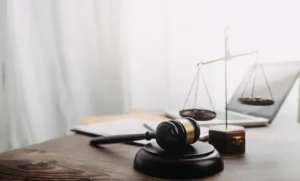Urban Myth: Super is a protected investment. This is wrong, most Super is exposed to tax debts and creditor claims.
The false sense of security with superannuation as an effective asset protection strategy has arisen because the law says that a person’s interest in super fund is not property available to a bankrupt’s creditors. This protection is true, and it comes from section 116(2)(d) of the Bankruptcy Act. That is a point to note, the protection comes from the Bankruptcy Act! This protection does not arise until the relevant superannuation person is officially bankrupt.
But super is not safe in a pre-bankruptcy scenario. Do you want proof that busts this urban myth? Read on…
Commissioner of Taxation has power to issue garnishee notice?
Yes. Not only does the ATO have the power to issue a garnishee notice to a super fund to recover any tax-related liability of a taxpayer, the Commissioner has told his staff to do it. In Practice Statement Law Administration PS LA 2011/18, the ATO staff have been told that “a garnishee notice in respect of any tax-related liabilities may be served on a superannuation fund.”
Let’s be clear, what the ATO is telling its staff is that if a person owes us tax, you can use our garnishee powers against their superannuation to pay their tax. This means that you and your clients’ super is at risk prior to bankruptcy and a garnishee can be used to capture it.
So, when can this power be used and how? Knowing the answer reveals the risks and foretells a strategy of protection.
What is the effect of a garnishee notice?
The amount of money sitting in the super account can be swept up in the garnishee notice and taken immediately. The ATO has special powers to self-issue the garnishee notice. But they are not the only one, a creditor can also seek to sweep up superannuation money with a Court ordered garnishee.
What is required to wield this garnishee power?
First there must be a debt. Whether this is Court ordered or arises from an ATO notice of tax assessment, the debt can be claimed under a garnishee notice. This is a notice that requires anyone who holds money for the debtor/taxpayer to pay the money to the creditor/ATO.
To what extent will the garnishee be successful? This is one of the answers that reveals the risks and foretells a protection strategy.
The ATO says it clearly when it says: “The garnishee … will not be effective until the debtor’s (member’s) benefits are payable under the rules of the (superannuation) fund.” At that point, the super fund will be required to pay the garnisheed amount to the Commissioner.
The key concept is: what is “due and payable” from the superannuation fund. The person claiming the garnishee (including the ATO) can only garnishee what is accessible by the superannuation member. And this will depend on the rules of the fund. It is the “rules of the fund” concept that is the key to a potential solution.
What super is affected?
All and any that is currently due and payable. It does not matter if it is self-managed, multi-member or a small APRA fund; it is all exposed to a garnishee claim. It also does not matter whether the fund benefit is a claimable lump sum or pension of any form; the amount of the benefit that is due and payable to the member-taxpayer is exposed to a garnishee claim.
What should you or your clients do?
Be proactive and act quickly.
If bankruptcy is somewhat inevitable, embrace this early, before a garnishee can be issued. Once a garnishee issues (whether ATO or creditor), there is virtually no scope to protect the super. Declaring bankruptcy after the fact is too late; once issued on the super it will already have been garnisheed. So, act early, assess the probability and if inevitable protect the super by embracing bankruptcy. All of the protections of the Bankruptcy Act will then apply.
But what about the pre-bankruptcy phase? The key to enhancing super’s pre-bankruptcy protection lies in the phrase “due and payable”. It is only an amount that is “due and payable” from the super fund to the member that may be subject to a garnishee notice.
One thing is clear; superannuation that is still the subject of a condition of release is not due and payable. Because we know that today all superannuation complies with the minimum standards of the Superannuation Industry (Supervision) Act and Regulations we can recognise that no superannuation is due and payable until a condition of release is satisfied. Progressively the most common such condition is terminating an employment after the age of 60 or reaching the age of 65.
If the superannuation is not due and payable before terminating an employment after the age of 60 or before reaching the age of 65, the garnishee notice will not be effective. Otherwise it can be and will.
And herein lies another answer that reveals the risks and foretells a strategy of protection.
The ATO recognises that the rules of the fund are critical to the effectiveness of a garnishee. And all superannuation fund rules carry the minimum condition of release standard. Can a higher release condition be imposed and will this delay the time when the superannuation is due and payable? The answer is yes and yes and consequently the asset protection of the superannuation will be extended in the pre-bankruptcy phase.
Simple steps to better protection
Step 1 – Read the terms of the benefit entitlement. This is found in the trust deed or other constituent document for the super arrangement. Careful construction of the terms of the fund and the benefit entitlements will achieve added security of super in the pre- bankruptcy period.
Step 2 – Ensure that there is appropriate power to secure the super interest.
Step 3 – Adjust the terms of the benefit entitlement to reflect what is acceptable to the member, balancing what is due and payable with their objectives and need for security and access to retirement funds.
Step 4 – Manage the investment strategy to the outcome decided upon.
The strategy is to match the superannuation member needs with their intention and to enhance that protection within that context. For example:
- if the person wants to work until age 70 – increase the preservation age and release condition to age 70. This will mean that nothing is due and payable before age 70 and the garnishee cannot apply prior to that age, or,
- if the person wants a pension with a reversionary pension to a spouse – have the rules express this with no right to a capital sum. The income stream may be at risk, but not the capital because this is no longer due and payable.
The garnishee risk applies to all super; SMSF, multi or SAF. The risk is the same with each; however, with SMSFs achieving higher protection is more self-manageable.
Professional advice that super is protected?
If you have advised another that super is a fully protected asset you need to amend your statement of advice or recommendation. Any such earlier statement that did not limit itself to the post- bankruptcy situation and is simply wrong.
Conclusion
Recognising the problem and the risk identifies both the problem and the solution. The next step is action. If superannuation has currently passed or is about to pass a condition of release (minimum) standard, consider raising the standard to one that suits. Making the age 70 or later or crafting the income stream rules will enhance protection in the pre-bankruptcy phase and if necessary, will secure the time required to enliven the full protection that the Bankruptcy Act can give.
Doing nothing will keep the superannuation exposed to creditors and to the ATO, which is a shame when the solution is so simple.
If you require any assistance with any of the items that were discussed above, please do not hesitate to contact a lawyer in Coleman Greig’s Superannuation and SMSF team, who would be more than happy to assist you today.














